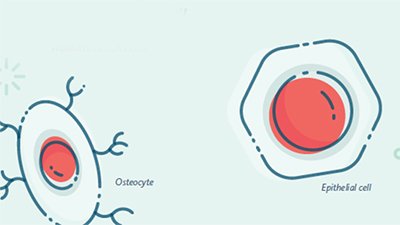Feedback: Hermaphroditism
How should Christians deal with the topic of hermaphroditism?
I can understand that hermaphrodites are a result of sin. But if homosexuality is wrong then what moral basis does a hermaphrodite or "its" parents have for selecting a gender. If the individual disagrees with "its" parents choice would it be morally acceptable to switch once they become old enough to choose for themselves? I get challenged with questions like these. I’m not trying to be ridiculous—I just would like to have a good answer.
—R.
Dear R.,
I do not think that your questions are ridiculous. While training as an obstetrician-gynecologist, I also began asking these same questions. Let me start by saying that I hold the Bible as the ultimate authority to test any answers. Your question indicates that you also start with that foundation. You understand that, since sin entered the world, “the whole creation groaneth.” The curse of mutations and disease processes mars everything, even the original perfect design, for “he which made them at the beginning made them male and female.” You also understand that homosexuality is wrong. Acts of homosexuality are a willfully rebellious choice according to Romans 1. Despite claims that homosexuality is an inborn characteristic, the Bible labels any lustful acts outside of the sanctity of monogamous heterosexual marriage as sin and abomination. Since hermaphrodites are born with an actual physical defect, the thorny topic of how to deal with hermaphroditism must at the outset be clearly separated from the issue of homosexuality.
Medical Aspects of Hermaphroditism:
Hermaphroditism includes true hermaphroditism and pseudohermaphroditism. Normal human females are genetically XX and have ovaries. Normal human males are genetically XY and have testes. True hermaphrodites have both ovarian and testicular tissue present in their bodies. As a result of the hormonal effects of these conflicting tissues, a wide variety of external appearances may result. Pseudohermaphrodites have either ovaries or testes, but their external appearance does not match their actual genetic gender. A variety of defects can cause these conditions, but the common denominator of them involves an effect on the developing embryo long before birth.
The genetic gender of a baby is determined at the moment of fertilization. The DNA blueprint for sexual organ development is selected in accordance with the XX or XY genotype. As with many other birth defects, hermaphroditism can result from either an abnormality in the DNA itself or a defect in development as the organs take shape. God chose to use the same design for both male and female humans in the earliest stages of embryonic development. Under the influence of the hormones and the DNA blueprint, certain basic tissues are formed into either male or female structures and certain tissues regress. Embryologists call those building blocks destined to develop into “female” structures the Mullerian duct system, and those building blocks destined for “male” structures are the Wolffian duct system.
While most forms of hermaphroditism are apparent at birth, even that is not always the case. For example, babies with testicular feminization are XY but appear to be normal females from birth. Most types of hermaphroditism appear at birth as ambiguous genitalia. As an obstetrician in the modern world, I knew that genetic questions about the ambiguity of a newborn’s genitalia could be answered with a look at the child’s DNA. Nevertheless, even with such a modern advantage, the sex assignment of a child with hermaphroditism will oftentimes depend upon which gender assignment will make the child most functional. Even with surgery, options are often limited.
Some cases of pseudohermaphroditism, such as congenital adrenal hyperplasia, involve a hormonal abnormality that causes exaggerated development of tissue from the wrong gender group (that is, the tissues which do not match the genetic gender) in utero. In fact, CAH is the most frequent cause of ambiguous genitalia in newborns. These XX (genetically female) babies are partially masculinized at birth to varying degrees, although their internal organs are completely female. Medical treatment for this particular form of pseudohermaphroditism can be helpful in achieving normal female function; therefore, after diagnosis, these babies are generally “assigned” a female gender.
Prior to modern genetic testing, an XY person with testicular feminization, another form of pseudohermaphroditism, would be raised as a normal girl and someday discover herself to be infertile. Otherwise, because her body is completely unresponsive to testosterone (the male hormone), she would be a normal female “by default.” Her identity as a girl would be established at birth, and without modern technology she could marry and live out her life as a normal but infertile woman.
True hermaphrodites are often raised as males (about 75%), but 80% of them are XX, genetically female. The causes of true hermaphroditism—the presence of both ovarian and testicular tissue in the same body—are varied and not always known. The actual genetic makeup is also variable, some being mosaics with both XY and XX cells in their bodies, some being XY, and some being XX. The cause of the development of both ovarian and testicular tissue without the matching genetic component can be a mystery, but under the influence of the hormones produced by these two tissues, ambiguous genitalia typically develop. Again, the assignment of sexual identity is based on external appearance and the reasonable functional expectations of the child’s anatomy.
What About Choices?
Consider this analogy: When a baby is adopted, his identity with his new parents is assigned. His biological history and the existence of his biological parents is not altered, but his identity is forevermore with his adoptive parents. Even if he gets to know his biological parents, his identity and life are primarily shaped by his adoptive parents. So it is with sex assignment. The child’s identity is shaped by the choice. Furthermore, just as there is nothing inherently wrong about a child knowing about his biological parents, so there is no evil inherent in a hermaphrodite considering his or her genetic identity.
As to the ultimate question of changing gender identity, to make a blanket statement about all cases would be insensitive and cruel. God knows the heart of every person.1 Regardless of the choice, a Christian with this problem can rejoice in his/her identity in Christ that transcends male-ness and female-ness and that will last for eternity.
Elizabeth Mitchell, M.D.
Footnotes
- Author’s opinion: Sincere Christians can hold a range of biblically-based opinions about the potentially difficult situation when the assigned gender does not match the genetic gender. In my personal opinion, the genetic aspects of gender identity in personality are often over-rated by people on both sides of various controversial issues. If assigned gender does not match genetic gender, God knows if a person who disagrees with assigned gender is rebellious against the environment God knew he/she would grow up in or sincerely wishing to become what God genetically designed him/her to be. For a person to change his/her assigned gender would, of course, be a decision with momentous repercussions, not to be undertaken lightly or without a great deal of counseling. Confusion with the homosexual issue would likely cloud the picture in the minds of many friends and family. On the other hand, to simply maintain the assigned gender and live life with that identity is analogous to learning to live a normal life with some other sort of birth defect. Living life in the assigned gender would be no more “living a lie” than identifying yourself by your adopted name.
Recommended Resources

Answers in Genesis is an apologetics ministry, dedicated to helping Christians defend their faith and proclaim the good news of Jesus Christ.
- Customer Service 800.778.3390
- Available Monday–Friday | 9 AM–5 PM ET
- © 2025 Answers in Genesis






